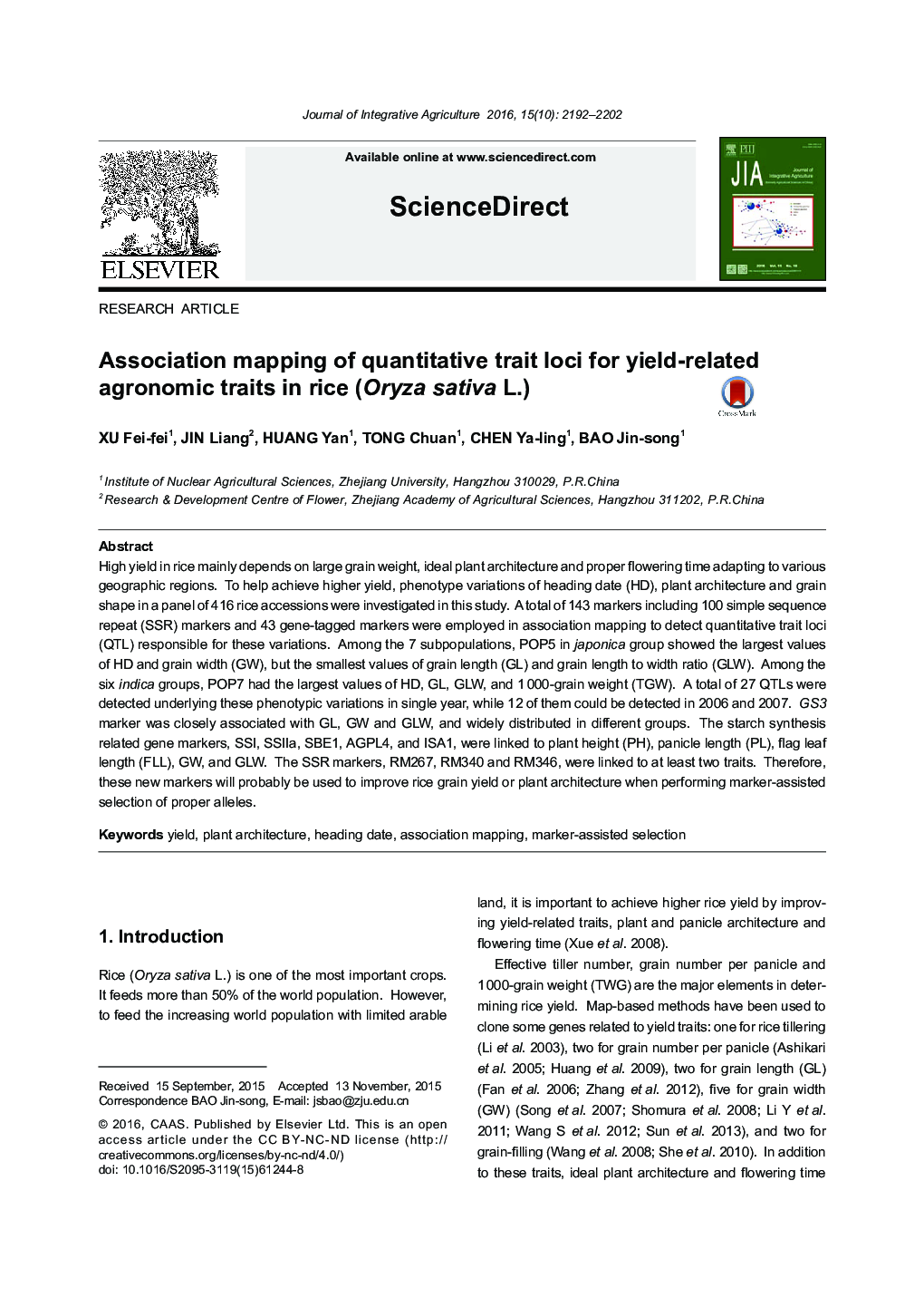| کد مقاله | کد نشریه | سال انتشار | مقاله انگلیسی | نسخه تمام متن |
|---|---|---|---|---|
| 4494052 | 1623716 | 2016 | 11 صفحه PDF | دانلود رایگان |

High yield in rice mainly depends on large grain weight, ideal plant architecture and proper flowering time adapting to various geographic regions. To help achieve higher yield, phenotype variations of heading date (HD), plant architecture and grain shape in a panel of 416 rice accessions were investigated in this study. A total of 143 markers including 100 simple sequence repeat (SSR) markers and 43 gene-tagged markers were employed in association mapping to detect quantitative trait loci (QTL) responsible for these variations. Among the 7 subpopulations, POP5 in japonica group showed the largest values of HD and grain width (GW), but the smallest values of grain length (GL) and grain length to width ratio (GLW). Among the six indica groups, POP7 had the largest values of HD, GL, GLW, and 1 000-grain weight (TGW). A total of 27 QTLs were detected underlying these phenotypic variations in single year, while 12 of them could be detected in 2006 and 2007. GS3 marker was closely associated with GL, GW and GLW, and widely distributed in different groups. The starch synthesis related gene markers, SSI, SSIIa, SBE1, AGPL4, and ISA1, were linked to plant height (PH), panicle length (PL), flag leaf length (FLL), GW, and GLW. The SSR markers, RM267, RM340 and RM346, were linked to at least two traits. Therefore, these new markers will probably be used to improve rice grain yield or plant architecture when performing marker-assisted selection of proper alleles.
Journal: Journal of Integrative Agriculture - Volume 15, Issue 10, October 2016, Pages 2192–2202